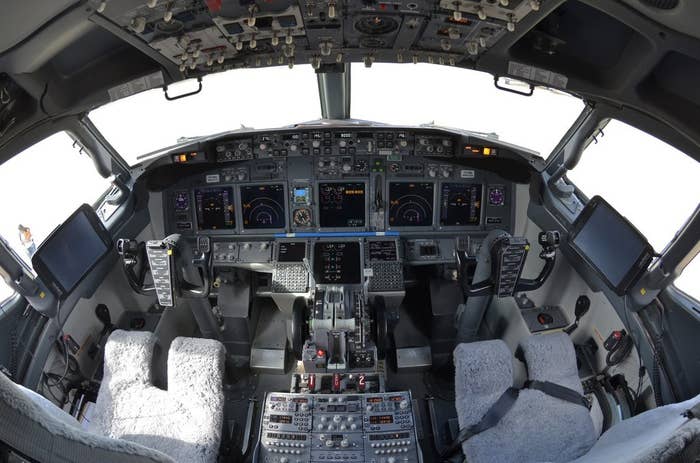
A day after it was revealed that the captain of the Germanwings flight was locked outside the cockpit, a French prosecutor on Thursday detailed how co-pilot Andreas Lubitz intentionally crashed the Airbus carrying 150 people into the Alps.
Much discussion has centered on how pilot Patrick Sonderheimer was locked out and unable to regain access to the cockpit before the jet crashed on Tuesday. Security standards and regulations introduced by the Federal Aviation Administration shortly after the Sept. 11, 2001, attacks have made cockpit doors virtually impossible to open from the outside.
"Prior to September 11, they weren't security doors," Saul Robinson, international aviation programs coordinator at Saint Louis University's Park College of Engineering, Aviation, and Technology, told BuzzFeed News. "They were designed for convenience and quiet in the cockpit."
Post September 11, new features were introduced to increase security in the cockpit, but doing so places the assumption that the flight's crew are the "good guys," said Ella Atkins, professor of aerospace engineering at the University of Michigan.
Based on the French prosecutor's statement that the co-pilot deliberately brought the plane down, the Germanwings case raises the question of what happens when the pilots have bad intentions, are suicidal, or are mentally incapacitated, Atkins said.
U.S. guidelines state that if a pilot leaves the cockpit, another crew member, such as a flight attendant, will sit in the pilot's seat to ensure there are two people in the cockpit at all times, Robinson said. On Thursday, European airlines said they will now require the same.
"Whether it's two pilots, one pilot and a flight attendant, if you lock the door, everyone on the other side can't do anything about it," Atkins said.
When the Germanwings captain left the cockpit – presumably to use the bathroom – Lubitz was left alone in the cockpit. When the pilot tried to regain access to the cockpit, he could not open the door, officials said.
According to an Airbus video describing cockpit procedures, the door is automatically locked when closed.
If someone outside the cockpit believes the pilots are incapacitated because they are not answering the intercom or responding to a buzzer, a crew member can enter an emergency code on the keypad.
Once the code is entered, a loud buzzer and flashing light are activated in the cockpit and, after 30 seconds, the door is automatically unlocked. The crew member has five seconds to enter the cockpit before the door is once again locked. A pilot inside the cockpit, though, has the ability to override the emergency code and keep the door from unlocking.
In January, a door malfunction locked the captain out of the cockpit on a Delta flight from Minneapolis to Las Vegas. The co-pilot, though, was able to safely land the plane without incident.
The Delta incident "is a clear demonstration that with modern jets, one crew member is sufficient to fly the aircraft," Atkins said.
Atkins argues that if in fact the Germanwings plane was intentionally crashed, the issue of automation overriding manual operation will be widely debated. She said that certain mechanisms can detect when something bad is about to happen and change the functions.
"People have placed trust in the flight crew that goes beyond what should be expected," Atkins said. "I'm not saying pilots are bad, they're well-trained, highly qualified pilots, but they're not magic."
